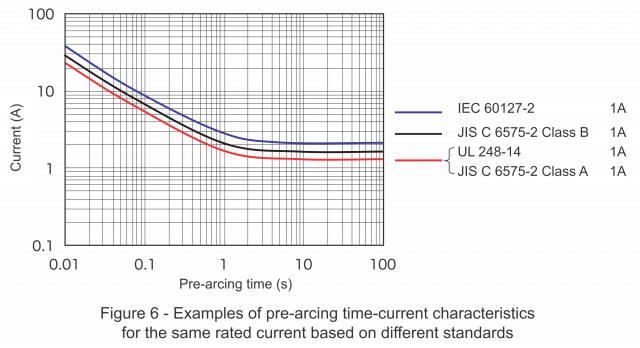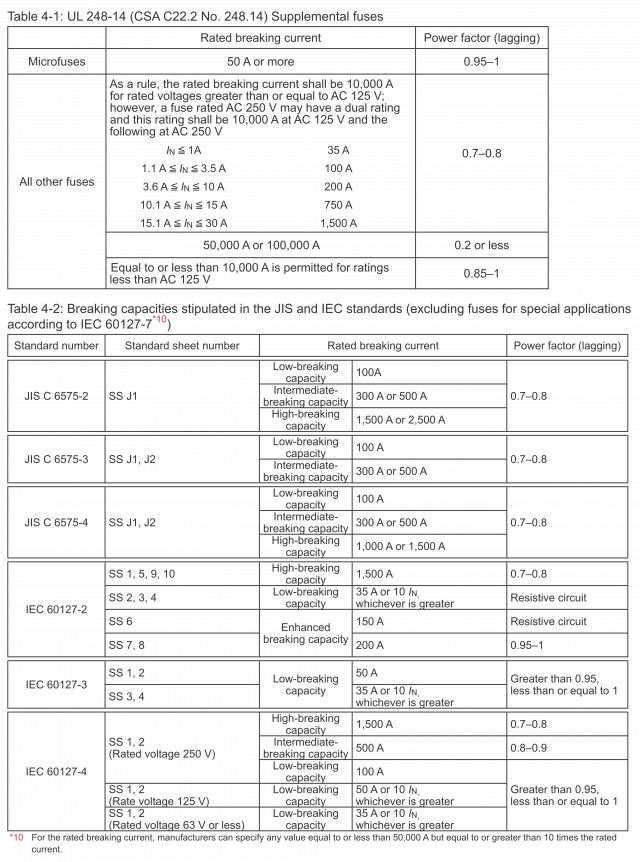What Is the Instantaneous Rating of a Fuse
A IR or kA IR. This current rating refers to the greatest amount of instantaneous current that may be interrupted safely without causing an explosion or damage to the fuse link carrier such as the cartridge or tube given a specific rated voltage.

How To Calculate A Fuse Rating Quora
C A rating of the maximum current that the fuse can safely interrupt.

. Interrupting ratings may vary with fuse design and range from 35 amperes for some 250VAC metric size 520mm. The National Electrical Code allows instantaneous trip circuit breakers to be sized to a maximum of 800 of a motors FLA value. Given a particular rated voltage this current rating refers to the maximum amount of instantaneous current that can be interrupted safely without explosion or damage to the fuse link carrier such as the cartridge or tube.
Answer 1 of 4. A rating of the maximum current that the fuse can safely interrupt Heat pump t-stats generally require two stages of heating in order to control. Interrupting ratings may vary with fuse design and range from 35 amperes for some 250VAC metric size 520mm.
The fuse that blows immediately when its rated current is exceeded is an instantaneous fuse. B The nominal amp rating 125. Normal instantaneous fuses are somewhat slower to respond to an overload condition.
Your answer 2 A fuse designed to operate at a higher current is a fuse with a higher amperage rating. All types of fuses will blow out but the differences lie in how and what leads to that blowing. They are used where time-delay fuses set at five times their ratings or circuit breakers at three times their rating will not hold the starting current of.
Article 430 in the National Electrical Code NEC recognizes two types of molded case circuit breakers MCCBs instantaneous and inverse time for motor branch circuit short circuit and ground fault protection in addition to fuses. Another point about voltage rating of fuse is - when the fuse blows and opens the circuit the gap between the live parts inside the fuse cartridge should offer sufficient insulation to prevent restrike. Interrupting Rating Breaking Capacity Also known as the breaking capacity or short circuit rating is the maximum approved current which the fuse can safely interrupt at rated voltage.
A The nominal amp rating 1. Take a look at the time delay fuse vs fast acting fuse analysis to know how they actually differ in functions. This type fuse is also known as a time delay fuse and is used in all single and three phase electric motor starters.
This will generally be 15 or 20. A dual element fuse is designed for dealing with in-rush current IE Starting an electric motor. Time delay fuses have the same time lag ratings as normal blow fuses but they can handle short term overloads.
This prevents the damaging overcurrent to reach its maximum instantaneous short-circuit value in the circuit if that fuse were replaced with a solid conductor of comparable oppositional characteristics to current flow. In most circuits this will be 20 x 120 2400 or 15 x 120 1800. Theres an important difference between these two types of circuit breakers.
The other way fuses are rated is by voltage. Breaker has a non-adjustable instantaneous trip setting and the curve is as depicted. The main function of a fuse is to melt the wire inside during overloads and disconnect the electricity flow into that circuit.
What is the IR rating of a fuse. Safe operation requires that the fuse remain intact no explosion or body rupture and clear the circuit. During a fault or short circuit condition a fuse may receive an instantaneous overload current many times greater than its normal operating current.
For example if a current of 20A was flowing through a fuse rated at 10A a. However the instantaneous setting would not coordinate with the down-line breakers or fuses and this could result in the main breaker tripping for down-line faults. If a main 480V breaker is used with an instantaneous setting in the range of 2 to 3 times the LTPU the incident energy could be 8 calcm2 ie.
Condition a fuse may receive an instantaneous overload current many times greater than its normal operating current. Be sure that both the current and voltage rating are. Safe operation requires that the fuse remain intact no explosion or body rupture and clear the circuit.
Apply the same calculation to 240-volt circuits. High speed instantaneous fuses are also known as fast acting or quick acting fuses. Normal instantaneous fuses are also known as instantaneous or normal blow fuses.
Check the wattage for all electrical fixtures and appliances on the circuit. The speed at which a fuse opens is governed by the material used in the fuse element the overload current and the ambient operating temperature. The 400A circuit breaker has an instantaneous trip set at 10 times its amp rating 10X which is 10 times 400A or 4000A.
Which is amperes interrupt rating or kilo amperes interrupt rating respectively. This is the reason why the fuse length has to increase with its voltage rating. Condition a fuse may receive an instantaneous overload current many times greater than its normal operating current.
What is the instantaneous rating of a fuse. PPE Level 2. It provides close protection your bare fuse wire will blow instantaneous at twice its rating which is course protection.
Multiply the amps by the volts. When a short circuit occurs a current limiting fuse within its current limiting range opens within ½ cycle. It can be reset thousands of times unlike a use-once-then-throw-away fuse.
What is the instantaneous rating of a fuse. This stoppage in current flow might be caused by a fault or a short-circuit. Look for the amperage notation on the breaker switch.
The 1200A circuit breaker has an instantaneous trip set at six times its amp rating 6X which is six times 1200A rating or 7200A. The speed of a fuse is essentially the time it takes for the fuse to open when a fault current occurs.
![]()
What Is Fuse Types Of Fuses And Their Applications Electrical Academia

No comments for "What Is the Instantaneous Rating of a Fuse"
Post a Comment